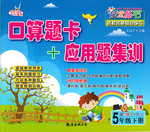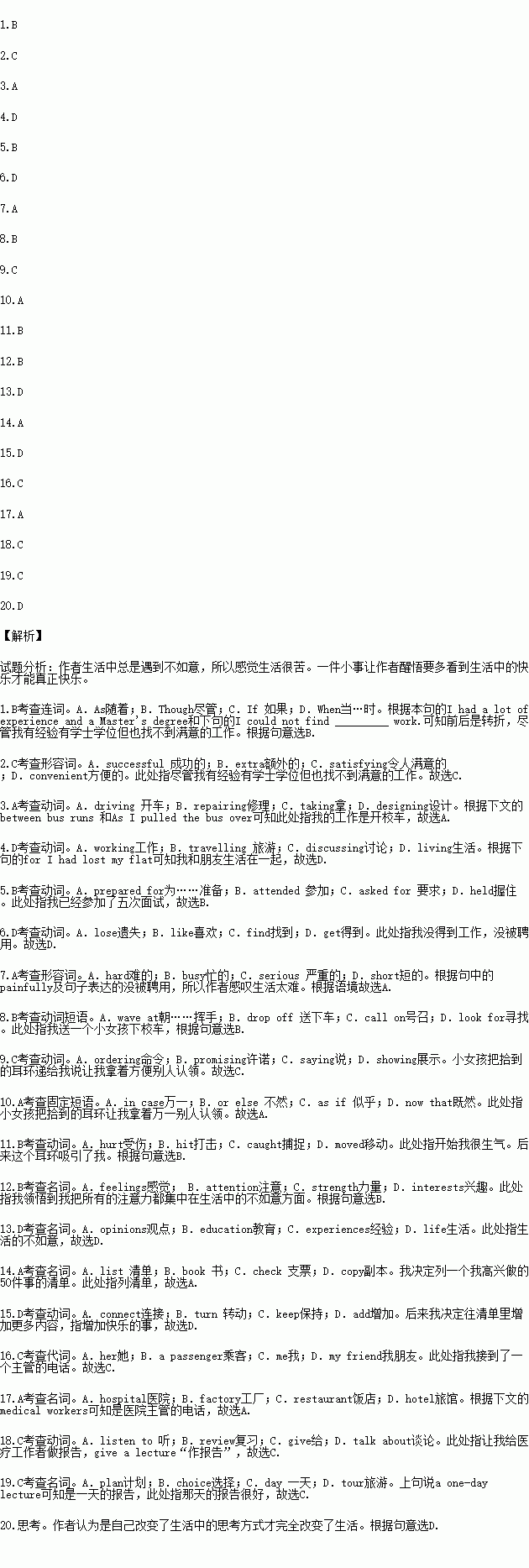题目内容
完形填空
阅读下面短文,从短文后各题所给的四个选项 (A、B、C和D) 中,选出可以填入空白处的最佳选项,并在答题卡上将该项涂黑。
Around twenty years ago I was living in York._________I had a lot of experience and a Master's degree, I could not find_________ work..
I was_________ a school bus to make ends meet and _________ with a friend of mine, for I had lost my flat.I had _________five interviews with a company and one day between bus runs they called to say I did not _________ the job.“Why has my life become so _________ ?” I thought painfully.
As I pulled the bus over to _________ a little girl, she handed me an earring _________ I should keep it _________ somebody claimed (认领) it.The earring was painted black and said “BE HAPPY”.
At first I got angry.Then it _________ me – I had been giving all of my_________ to what was going wrong with my _________ rather than what was right! I decided then and there to make a _________ of fifty things I was happy with.Later, I decided to _________ more things to the list.That night there was a phone call for _________ from a lady who was a director at a larger _________.She asked me if I would_________ a one-day lecture on stress management to 200 medical workers.I said yes. My _________there went very well, and before long I got a well-paid job.To this day I know that it was because I changed my way of _________ that I completely changed my life.
1.A.As B.Though C.If D.When
2.A.successful B.extra C.satisfying D.convenient
3.A.driving B.repairing C.taking D.designing
4.A.working B.travelling C.discussing D.living
5.A.prepared for B.attended C.asked for D.held
6.A.lose B.like C.find D.get
7.A.hard B.busy C.serious D.short
8.A.wave at B.drop off C.call on D.look for
9.A.ordering B.promising C.saying D.showing
10.A.in case B.or else C.as if D.now that
11.A.hurt B.hit C.caught D.moved
12.A.feelings B.attention C.strength D.interests
13.A.opinions B.education C.experiences D.life
14.A.list B.book C.check D.copy
15.A.connect B.turn C.keep D.add
16.A.her B.a passenger C.me D.my friend
17.A.hospital B.factory C.restaurant D.hotel
18.A.listen to B.review C.give D.talk about
19.A.plan B.choice C.day D.tour
20.A.operation B.speaking C.employment D.thinking
 口算题卡加应用题集训系列答案
口算题卡加应用题集训系列答案

